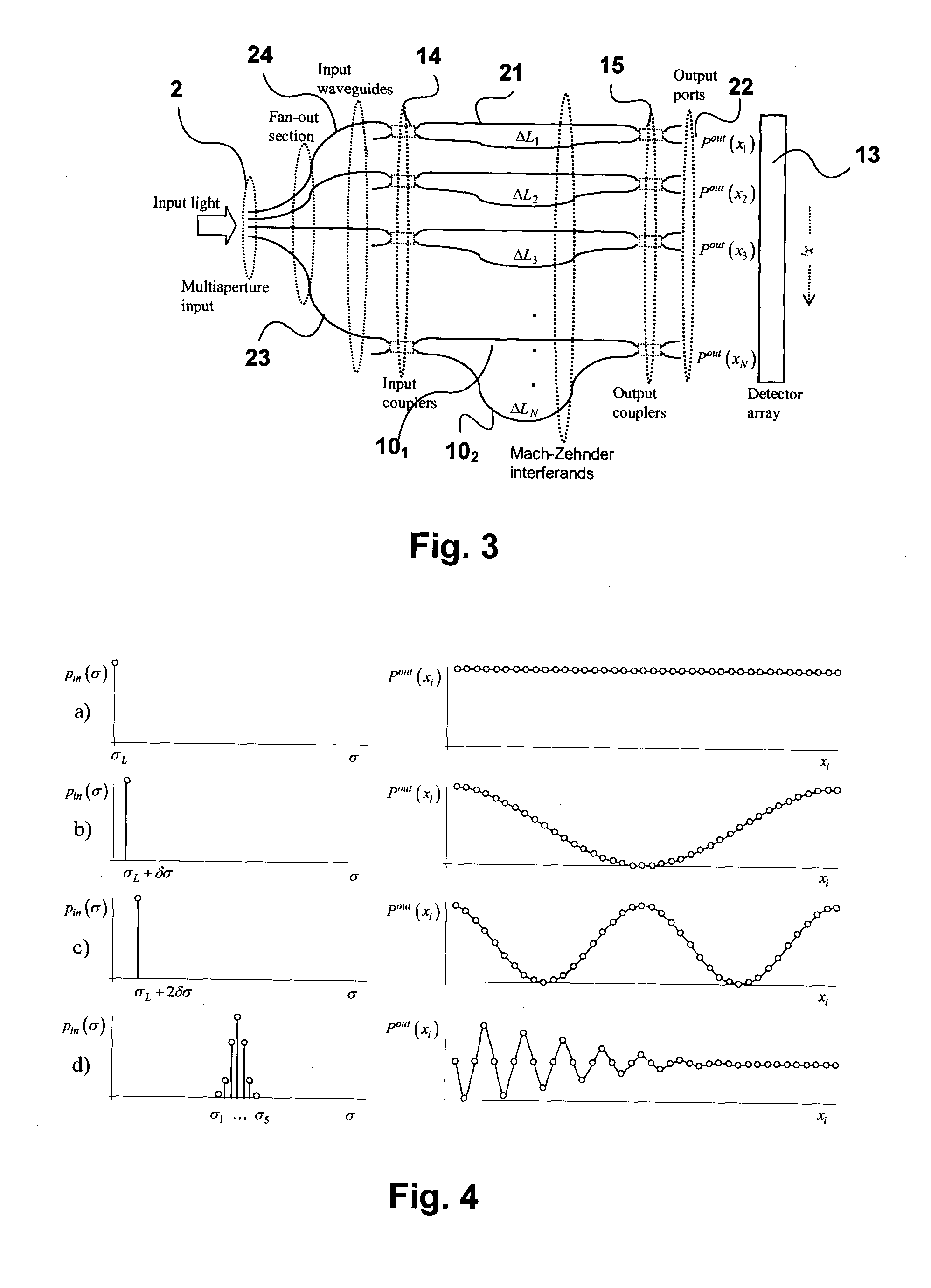Planar waveguide wavelength dispersive devices with multiple waveguide input aperture
a waveguide and wavelength dispersive technology, applied in the field of waveguide based spectrometers, can solve the problems of insufficient light throughput, reduced light throughput (étendue), and even more obvious problems, and achieve the effects of compact layout, simple readout method, and large optical throughpu
- Summary
- Abstract
- Description
- Claims
- Application Information
AI Technical Summary
Benefits of technology
Problems solved by technology
Method used
Image
Examples
Embodiment Construction
[0044]The above mentioned drawbacks can be overcome by using a spectrometer with multiple input waveguides. Intercepting incoming light by multiple input waveguides allows maximizing total light gathering capability (étendue).
[0045]The spectrometer shown in FIG. 1 in schematic form comprises two interleaved waveguide arrays 8, 9 formed by alternate waveguide elements 10 constructed in a slab waveguide. The waveguides of the first array 8 introduce a delay 10a, which progressively increases across the array while the waveguides of the second array 8, introduce a delay 10b, which progressively decreases across the array in a complementary manner, so that the arrays create interference orders m and −m, respectively, thus combining two dispersive systems of opposite signs. The adjacent waveguide pairs can also be considered as individual waveguide structures forming interferometers, the outputs of which are superimposed to form output wavefronts 11, 12 which are detected by photodetecto...
PUM
 Login to View More
Login to View More Abstract
Description
Claims
Application Information
 Login to View More
Login to View More - R&D
- Intellectual Property
- Life Sciences
- Materials
- Tech Scout
- Unparalleled Data Quality
- Higher Quality Content
- 60% Fewer Hallucinations
Browse by: Latest US Patents, China's latest patents, Technical Efficacy Thesaurus, Application Domain, Technology Topic, Popular Technical Reports.
© 2025 PatSnap. All rights reserved.Legal|Privacy policy|Modern Slavery Act Transparency Statement|Sitemap|About US| Contact US: help@patsnap.com



